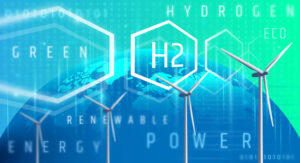Firm Alert
(By Justine Kasznica and Ember Holmes)
On March 21, 2022, President Biden issued a statement in response to evolving intelligence that Russia is exploring options for malicious cyberattacks against the United States. The statement highlights the measures taken by the Administration to strengthen cyber defenses within the federal government and, to the extent that it has authority, within critical infrastructure sectors. Additionally, President Biden called on private sector critical infrastructure owners and operators to accelerate and enhance their cybersecurity measures, urging them to take advantage of public-private partnerships and initiatives, including those administered by the Department of Homeland Security’s Cybersecurity and Infrastructure Security Agency (CISA). Appended to President Biden’s statement was a Fact Sheet, which outlines specific steps that companies can take to bolster cybersecurity across the nation, and refers readers to various resources compiled by CISA, as part of a cybersecurity campaign.
Background
In November 2021, the Biden administration began ramping up its cybersecurity and defense measures in response to Russian President Vladimir Putin’s escalating aggression toward Ukraine. On January 11, 2022, CISA, the Federal Bureau of Investigation (FBI), and the National Security Agency (NSA) issued Alert AA22-011A, “Understanding and Mitigating Russian State-Sponsored Cyber Threats to U.S. Critical Infrastructure,” which provided an overview of Russian state-sponsored cyber operations; commonly observed tactics, techniques, and procedures (TTPs); detection actions; incident response guidance; and mitigations. The Biden administration, CISA, FBI, and NSA continued to monitor the level of risk posed by Russia, which recently escalated based on intelligence indicating that Russia is planning cyberattacks against the United States in response to economic sanctions that the United States has imposed. …
 While long term goals of lowering greenhouse gas emissions and employing sustainable energy sources have gained momentum across all industries, Chevron Corp., through its New Energies division, has stated it has shorter term goals as well – it says its planned growth in renewable fuels, hydrogen and carbon capture is expected to enable about 30 million tones of annual CO2 equivalent emission reductions by 2028. Technology adoption, policy and consumer behavior will drive energy choices, says a top sustainability executive, as companies focus on carbon management along the path to net zero. All three factor into whether one form of energy or another is sought to supply demand created by income and population growth, according to Bruce Niemeyer, vice president of strategy and sustainability for Chevron Corp. “Keeping supply and demand balanced through the transition is important so the transition works for all and doesn’t become a negative event for those most vulnerable,” Niemeyer said earlier this month during UT Energy Week. He added, “We’re going to need many forms of energy, which means we need to work on reducing the carbon intensity of all of them.” Chevron is among the many companies working to lower its emissions amid a heightened focus on global warming and future energy supplies. Like the smartphone, technologies with features that meet consumers’ needs or low-cost technologies will gain market share, he said, noting consumer preference is a strong factor. Take, for example, the automotive sector. EVs are expected to play a key role in the energy transition, giving their lower emissions, compared to vehicles with internal combustion engines. However, “last year, our best estimate is there were 6.6 million electric vehicles sold. At the same time, there were 35 million SUVs.
While long term goals of lowering greenhouse gas emissions and employing sustainable energy sources have gained momentum across all industries, Chevron Corp., through its New Energies division, has stated it has shorter term goals as well – it says its planned growth in renewable fuels, hydrogen and carbon capture is expected to enable about 30 million tones of annual CO2 equivalent emission reductions by 2028. Technology adoption, policy and consumer behavior will drive energy choices, says a top sustainability executive, as companies focus on carbon management along the path to net zero. All three factor into whether one form of energy or another is sought to supply demand created by income and population growth, according to Bruce Niemeyer, vice president of strategy and sustainability for Chevron Corp. “Keeping supply and demand balanced through the transition is important so the transition works for all and doesn’t become a negative event for those most vulnerable,” Niemeyer said earlier this month during UT Energy Week. He added, “We’re going to need many forms of energy, which means we need to work on reducing the carbon intensity of all of them.” Chevron is among the many companies working to lower its emissions amid a heightened focus on global warming and future energy supplies. Like the smartphone, technologies with features that meet consumers’ needs or low-cost technologies will gain market share, he said, noting consumer preference is a strong factor. Take, for example, the automotive sector. EVs are expected to play a key role in the energy transition, giving their lower emissions, compared to vehicles with internal combustion engines. However, “last year, our best estimate is there were 6.6 million electric vehicles sold. At the same time, there were 35 million SUVs. 